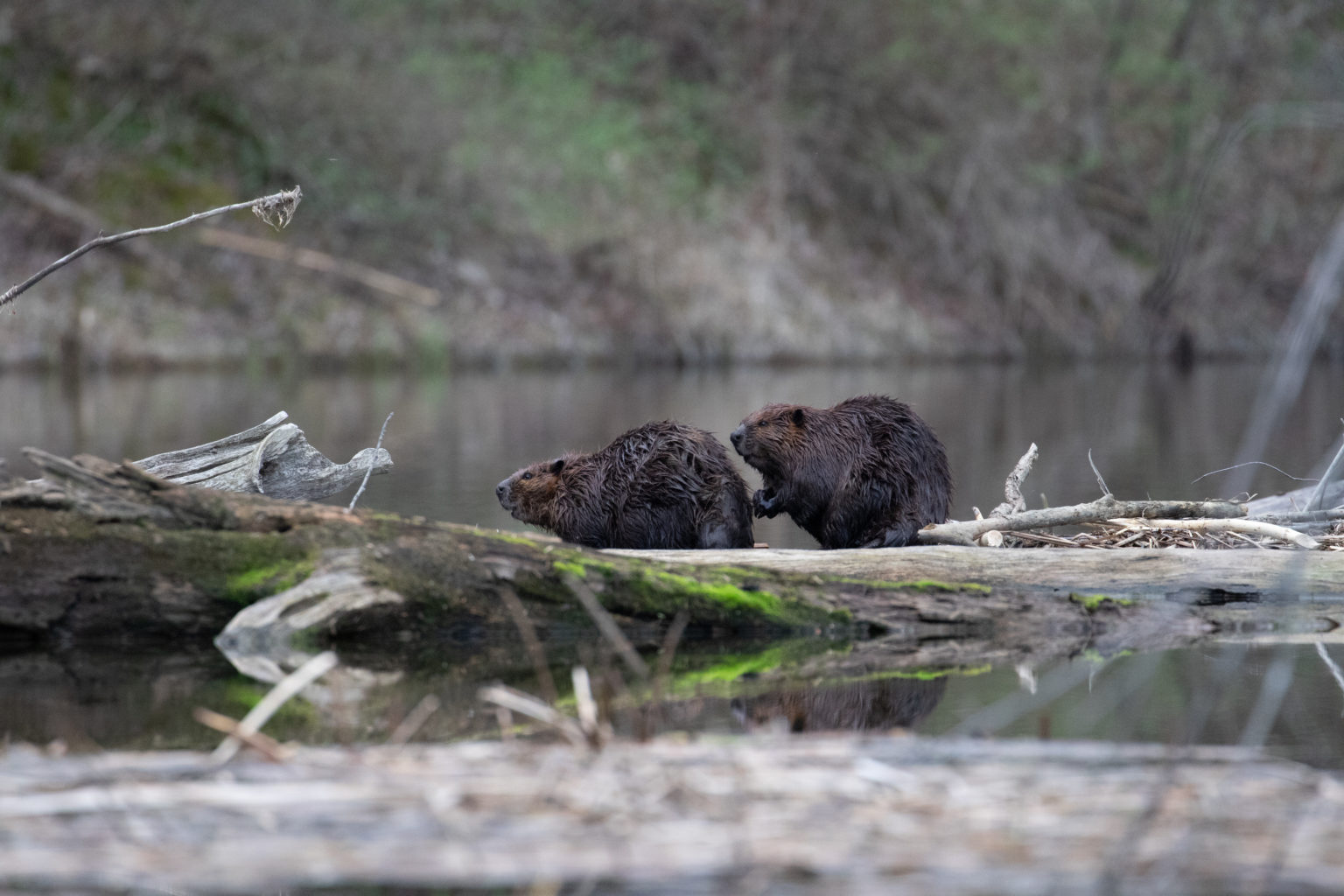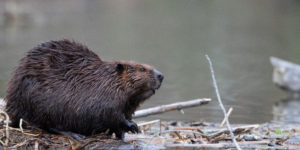In a Beaver Bind

By Sean Beckett, Program Director
Few wild animals are more entangled in the history of human development than the beaver. Once a symbol of pioneering profit, beavers today represent either industriousness or inconvenience, depending on who’s asking.
Beaver life history revolves around building a near-impenetrable lodge from sticks and earth, either in a riverbank, or at the edge of a pond. Their dams then serve to raise the water level enough to submerge their lodge entrance out of reach of terrestrial predators, while bringing the waterline closer to the forests on shore. This gives beavers safer access to their preferred food: green shoots and cambium, found just under the bark of trees and shrubs.
Put another way, a single species cuts down the forest and manipulates the local hydrology, transforming its surroundings to suit itself with little regard to surrounding inhabitants. And perhaps this uncomfortable parallel between beavers and humans has fueled their status as either revered or reviled.
The similarities end there, though, because where human development tends to deplete ecosystems, the beaver’s various engineering pursuits yield a complex mosaic of ecologically rich habitats as ponds fill, drain, dry, and reforest over the span of years and decades. All of this is an unintentional byproduct of self-serving engineering, but millions of years of coevolution has yielded an ecosystem not only resilient to industrious beaver populations, but dependent on them. A healthy and biodiverse forest landscape requires regular, patchy disturbances. And those disturbances, historically, came from beavers. Beavers unwittingly craft the ecosystems critical to a wide range of creatures from insects to moose to birds to fish.
Zooming in on NBNC’s 28 acres, we are currently puzzling about how to cohabitate with our local beavers. Given enough space and time, the ideal approach would be to just leave them alone and walk away to let nature “take its course.” But we have neither the space nor time for that — we have a riparian (riverside) forest to restore.
Our overstory trees are scarce and declining – the butternut and ash are doomed by blight and Emerald Ash Borer, and the willows are nearing the end of their characteristically short lives. The invasive Japanese Knotweed and European Honeysuckle proliferating in the understory has outcompeted many of the saplings that would otherwise grow to replace the canopy trees. To address these factors , we’ve planted over 800 native trees over the last two years to grow our next generation of mature trees.
Inconveniently, those young trees are the beavers’ favorite source of food and building materials. Wrapping a cage around the tree base protects it from beaver felling, but on a large scale, each wrapped tree simply deflects the beavers such that each remaining unprotected tree is increasingly vulnerable.
The Wrightsville Dam upstream from NBNC also complicates things. Built for flood control in the 1930s, the dam regulates the river flow at a fairly consistent 20 cubic feet per second (cfs) in the summer. Even after heavy storms, the river never exceeds 1,200 cfs. But prior to the dam’s construction, the river carried higher flows with greater fluctuation during peak runoff (regularly exceeding 2,000 cfs; the historic 1927 floods saw the North Branch at a whopping 17,000 cfs).
High flow events destroy beaver dams built across powerful rivers, so beavers are discouraged by places with strong and inconsistent flow rates. The deceptively low and stable flow of the North Branch today entices beavers to build precarious dams that are then blown out during peak spring snowmelt. We suspect that today’s dam-controlled river results in beavers building dams where they naturally would not, and building them more frequently than they naturally would — with the raw materials for all the dam rebuilding coming from our small and vulnerable riparian corridor.
How does NBNC best manage a healthy ecosystem under such constraints while still celebrating beavers? How do we steward thousands of new (and expensive) saplings without simply creating a beaver buffet? How do we discourage beavers from damming the river without resorting to lethal control (which is ineffective over the long-term) or relocation (which is both ineffective and illegal)?
Such problems rarely have good answers, but we invite you to share your ideas and suggestions with us. Meanwhile, we muddle along, caging saplings in some places and fencing out beavers in others, all the while listening to the land — and the beavers — to find a middle ground here at the water’s edge.


